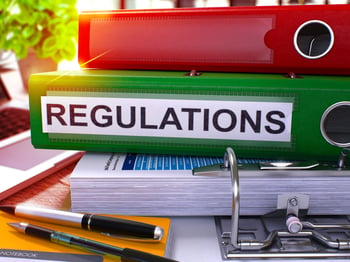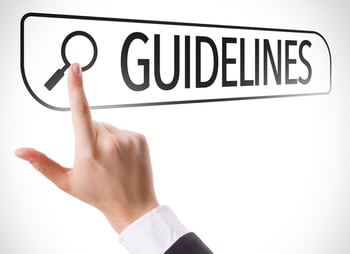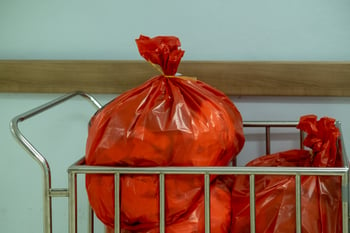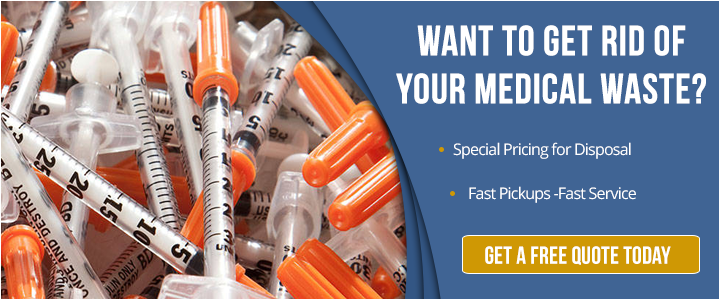In the United States, hospitals produce more than 5.9 million tons of medical waste each year. Add in the amount of waste produced by other healthcare facilities, such as veterinarian offices, pharmacies and dental care offices, and that’s a lot of potentially hazardous waste being disposed of in this country.
Of this medical waste, biohazardous waste is one of the most hazardous. Also known as infectious waste, biohazardous waste includes items such as blood, body fluids, sharps waste, human specimens and even body parts. This type of waste may include other items typically found in a healthcare or laboratory environment if they are contaminated, such as cultures, petri dishes and flasks.
It’s important to note that hospitals and medical facilities aren’t the only places that generate biohazardous waste. Jails, prisons, casinos, gyms and animal shelters are all examples of facilities that generate biohazardous waste.
This contaminated waste is extremely dangerous to the environment and to people because it includes potentially infectious agents that pose a threat.
That makes medical waste disposal all the more important if your facility generates biohazardous waste. Because there are so many state and federal guidelines when it comes to medical waste and hazardous waste, it can be difficult to understand how biohazard medical waste disposal guidelines differ.
Strict Requirements
California has strict requirements detailing the collection and disposal of medical waste, including biohazard waste. It’s important to understand these requirements when implementing a medical waste disposal program.
waste, including biohazard waste. It’s important to understand these requirements when implementing a medical waste disposal program.
For example, healthcare waste must be separated into different waste streams, with infectious medical waste (or biohazardous waste) as one of them.
Biomedical waste must be placed in a disposable film bag to contain the waste. This bag must be marked with the international biohazard symbol and must meet all tear resistance requirements found in the Medical Waste Management Act of 2017.
The color of the bag must also be red, although there are two exceptions to this rule. Yellow bags must be used to collect trace chemotherapy waste and white bags must be used to segregate pathology waste.
Any type of biohazard medical waste that can poke through disposable film bags, such as sharps, are collected in puncture resistant red hard plastic boxes that cannot be pierced.
The management of needles and sharps is especially important because they can pose a unique risk to the public if an individual is accidentally poked with an disease infected needle. Keep in mind that even acupuncture needles are considered medical waste and allo acupuncturists must adhere to the requirements outlined under the Medical Waste Management Act, according to the California Department of Public Health.
Transporter Guidelines
An important part of understanding biohazard medical waste disposal guidelines is taking a look at medical waste transporter requirements.
taking a look at medical waste transporter requirements.
According to the California Department of Public Health, only medical waste transporters listed with the health department are allowed to transport medical waste, including biohazardous waste. This regulation is part of the California Health and Safety Code that has been in effect since 1993.
Here are a few regulations that involve the transportation of biohazard waste during the disposal process:
- All transporters must be registered hazardous waste haulers. That means they must obtain their Hazardous Waste Transporter Registration through the Department of Toxic Substances Control (DTSC).
- Transporters must complete an annual verification form, which requires company information and the type of medical waste the company transports. This form must be sent to the California Department of Public Health, along with attached copies of the DTSC Hazardous Waste Transporter Registration and tracking documents described below.
- Transporters must create a medical waste tracking document for each waste transfer. This includes information like the type of biohazard medical waste and contact information for the generator.
In the state of California, transporters of biohazard medical waste must carry a current hazardous waste ID.
How To Ensure You Meet Disposal Guidelines
It’s critical to remember that if you generate biohazard medical waste, you are responsible for this waste from the moment it is generated to the moment it is disposed of. This is known as Cradle to Grave. This is an important thing to keep in mind when choosing who you partner with to dispose of your waste.
responsible for this waste from the moment it is generated to the moment it is disposed of. This is known as Cradle to Grave. This is an important thing to keep in mind when choosing who you partner with to dispose of your waste.
While you may follow all storage and disposal guidelines on your end, if you choose the wrong disposal partner, your facility can face the consequences of improper disposal of your biohazard medical waste.
So what should you look for in a biohazard medical waste disposal company to ensure you meet all disposal guidelines? The answer boils down to experience, quality customer service and proof.
While many vendors transport hazardous waste or medical waste, it’s important that the disposal company that you choose has experience in biohazard medical waste. This will be beneficial if you need the disposal company to help you identify your medical waste, since federal and state regulations stipulate that you must distinguish what type of waste you are disposing of and the quantity of that waste.
Different types of medical waste, including biohazard medical waste, have differing regulations when it comes to disposal. So working with an experienced medical waste disposal company can help ensure your particular type of biohazard medical waste is disposed of properly.
Quality customer service right away can also be a good indicator of what type of service you will receive throughout your agreement. The best vendors will also offer prompt pickups, address any concerns that you have and help you package your waste properly.
Finally, it’s imperative that you check the disposal company’s qualifications. This includes documentation of compliance history, licenses and permits, a statement of qualifications (SOQ) and proof that staff is properly trained in handling biohazard medical waste.
Don’t be afraid to ask for a list of references, especially when it comes to asking for references from other companies that generate biohazard medical waste.
Help With Biohazard Medical Waste Guidelines
It can be challenging to navigate the many state and federal guidelines that govern biohazard medical waste. If your facility generates biohazard waste, along with other types of waste, it can be even more challenging to understand how disposal laws may be different for each type.
An experienced medical waste disposal company that is certified to transport and dispose of biohazard medical waste can help ensure all your waste is properly disposed of, as well as develop a long-term solution for managing your waste so that you can focus on the long-term future of your facility.


Comment